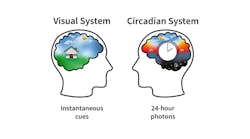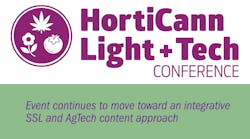March 16, 2011: Since this article was written, the URL links have been updated. For more information on this call for proposals, see: SSL Pilots under CIP
+++++
A Call for Proposals by the European Commission (EC) will include a specific objective related to innovative solid-state lighting (SSL) systems. A funding contribution of up to EUR 10 million in total, matched by equivalent contributions from participants, will support 2 or 3 SSL pilot projects.
Funding will be provided for large-scale pilot actions that demonstrate the best use of innovative lighting systems based on SSL for better light quality and control with a substantial reduction in energy consumption. Support will be provided to large-scale pilots that demonstrate energy savings, improved total cost of operation and user acceptance.
The Information Communication Technologies (ICT) Policy Support Programme (PSP) Call 5 - WP2011 will be published on 28 February and will close on 1 June 2011.
Currently at the draft stage, the work programme (WP) for 2011 includes Objective 1.1 entitled: “Innovative lighting systems based on Solid State Lighting (SSL).”
The Call is part of the Competitiveness and Innovation Framework Programme (CIP), which runs from 2007 to 2013 with an overall budget of EUR 3.621 billion. The CIP is divided into three operational programmes, one of which is the ICT-PSP.
The CIP pilot SSL project activity was one of the EC’s initiatives described by John Magan, Deputy Head of the EC’s Photonics Unit at Strategies in Light Europe 2010.
An Information Day will take place on Monday 28 February in Brussels. Technical objectives will be discussed as well as the administrative aspects of participating in the Call, and all prospective proposers are encouraged to attend. Registration is open from 18 January to 18 February inclusive.
The draft ICT-PSP work programme 2011 was approved by the CIP ICT Management Committee in December 2010, but at the time of writing remains subject to formal approval.
[Excerpt from the DRAFT work programme 2011]
Objective 1.1: Innovative lighting systems based on Solid State Lighting (SSL)
Funding instrument: Pilot Type B - It is intended to support 2 to 3 pilot actions for up to EUR 10 Million of EU contribution in total.
Focus and outcomes
The objective is to demonstrate the value of using innovative, intelligent Solid State Lighting (SSL) solutions under a variety of real life conditions, to assess user perception, to determine total costs and energy savings and to raise EU-wide awareness on those lighting systems.
It is intended to support 2 to 3 pilots, including coordinated activities such as measuring the specific contribution of SSL to energy efficiency, reporting and dissemination of results. They should be "flagship actions" for SSL showcasing better light quality with improved energy efficiency, and testing the latest advances in European SSL technologies (inorganic, organic and/or a combination of both) together with intelligent control systems.
Conditions and characteristics
The pilots have to address very illustrative applications/environments that have direct and significant benefits to citizens and will be complemented by an EU-wide awareness campaign. More specifically, pilots should:
– address a broad range of interior and exterior (excluding purely decorative) general lighting and illumination applications;
– target the refurbishment of existing buildings or infrastructures and ensure compatibility and interoperability with building management and existing installations. Primary focus should be on the commercial and/or non-residential sector, including large public, semipublic or private infrastructures;
– generate novel and reliable data on the user perception, economic costs and energy use compared with that of non-SSL;
– involve players across the full value chain from the lighting and luminaire industry through the architects and lighting designers, contractors/installers and end-users, including stakeholders and end-users from the public sector as appropriate.
– The European funding should be used to contribute to the additional initial cost of an SSL installation (i.e. over that of a non-SSL installation), the validation of the energy savings and carbon footprint reduction realized, and the dissemination of the projects outcome beyond today’s standard practice, involving and targeting installers, users and the general public.
– The pilots are expected to cooperate and contribute to common measurement methods and reporting formats in order to assess energy savings and carbon footprint reduction together. They will also provide accurate estimations of total cost of ownership and return on investment of SSL technology solutions.
– Networking and coordination between the pilots supported under this objective, as well as with other existing initiatives, are also required for ensuring maximum visibility and impact.
– Dissemination and communication activities should constitute an integral part of the proposed work, addressing not only experts, but also public authorities and relevant stakeholders who could play a role for the future deployment or replication of the envisaged solution/service, as well as the public at large.
– National and regional energy agencies should be involved in the dissemination of the results. Actions will also be expected to jointly contribute to the establishment of quality labelling initiatives and to relevant certification and standardization efforts in the field.
– Proposals should include specific and realistic quantified indicators to monitor progress at different stages in the progress lifetime.
Expected impact
– Accelerating market acceptance and wide deployment of intelligent SSL systems in Europe leading to substantial energy savings, better quality lighting and lower total lifetime costs for the users;
– Increasing competitiveness of European industry in lighting and in lighting control systems;
– Contributing to EU quality labelling, certification and standardization in energy efficiency and lighting systems;
– Contributing to meeting Europe's energy efficiency targets for 2020.




